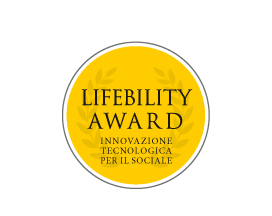LB.12.059P_HESTIA
Per partecipare al concorso i progetti vanno inviati entro:
di Luca Buccolieri, Taranto
L’idea nasce dalle notizie riguardo sui pazienti dopo con long COVID, che riportano effetti negativi sulla qualità di vita, e dallo stato di affollamento degli ospedali. Inoltre, la necessità di monitorare il paziente dopo esser stato dimesso dalla struttura ospedaliera rimane gravosa e un sistema di monitoraggio domestico potrebbe portare giovamento sia ai pazienti che al sistema sanitario.
Il progetto punta a un sistema di monitoraggio di pazienti con insufficienza respiratoria post-COVID, in lista per trapianti e con rischio cardiovascolare alto. Il sistema consisterebbe in una memoria e sensori per parametri vitali (pressione sanguigna, frequenza cardiaca, saturazione di ossigeno e CO2 del sangue), gestiti da un software per la trasmissione dei dati in un database accessibile al paziente attraverso un’app e al personale medico e l’analisi in tempo reale per rilevare eventi avversi da segnalare al medico.
Gli obiettivi sono la realizzazione del sistema, con particolare attenzione al software che, attraverso machine learning, riconosca l’insorgenza di eventi avversi e consenta un tempestivo intervento.
I risvolti sociali positivi sono la maggiore sicurezza del paziente e, per il sistema sanitario, meno posti letto occupati nelle strutture ospedaliere se non strettamente necessario, minore attrezzatura specifica necessaria e tempi di reazione più rapidi, che consentirebbero di diminuire la probabilità di un peggioramento della condizione del paziente e quindi maggiori costi in futuro. L’elemento di innovazione risiede nella possibilità di avere un sistema di telemedicina portatile per monitoraggio quotidiano, garantendo soccorso immediato e un report degli eventi avversi registrati, col fine ulteriore di controllare l’efficacia di una terapia.
Tale progetto non è stato precedentemente presentato a nessuna competizione né vi sono dimostrazioni sperimentali alla base della proposta, nonostante esistano le possibilità teoriche di svilupparla e quindi trattasi di un TRL2.
The idea stems from the news about patients after with long COVID, reporting negative effects on quality of life, and the crowded state of hospitals. Furthermore, the need to monitor the patient after discharge from the hospital remains burdensome and a home monitoring system could benefit both patients and the healthcare system.
The project aims at a monitoring system for patients with post-COVID respiratory failure, on the transplant list and with high cardiovascular risk. The system would consist of a memory and sensors for vital parameters (blood pressure, heart rate, oxygen saturation and blood CO2), managed by software to transmit the data into a database accessible to the patient through an app and to medical staff, and real-time analysis to detect adverse events to be reported to the doctor.
The objectives are the implementation of the system, with particular attention to software that, through machine learning, recognises the onset of adverse events and allows timely intervention.
The positive social implications are greater patient safety and, for the health system, fewer beds occupied in hospitals if not strictly necessary, less specific equipment needed and faster reaction times, which would make it possible to reduce the likelihood of a worsening of the patient’s condition and thus higher costs in the future. The innovative element lies in the possibility of having a portable telemedicine system for daily monitoring, guaranteeing immediate help and a report of recorded adverse events, with the additional aim of checking the effectiveness of a therapy.
This project has not previously been submitted to any competition, nor are there any experimental demonstrations behind the proposal, despite the fact that there are theoretical possibilities to develop it, so it is a TRL2.

